Smartphones & Tablets | October 21, 2023
![]()
Google is launching its new high-end devices, the Pixel 8 and Pixel 8 Pro smartphones, and the Pixel Watch 2, on October 12th. The company has a clear ambition: to establish the Pixel brand’s recognition among Spanish users while raising the bar in terms of capabilities, user experience, and differentiation.
In a time when the mobile market has contracted, Google has managed to navigate the storm by expanding into different markets, aware that users are increasingly opting for higher-value products that can last long-term, even if they are more expensive. This is where the new Pixel 8 devices come in, as they offer improved experiences and specifications compared to the previous generation. They also promise to be durable, with updates guaranteed for seven years, albeit with a substantial price increase compared to the Pixel 7 and Pixel 7 Pro.
The new Pixel 8 and Pixel 8 Pro start at €799 and €1,099, respectively, which is €150 and €200 more than the Pixel 7 and Pixel 7 Pro models. However, they are not the most expensive high-end devices on the market. For context, the Samsung Galaxy S23 and S23 Ultra start at €749 and €1,249, respectively, with the current promotion, while the new iPhone 15 and iPhone 15 Pro start at €959 and €1,219, respectively. The Pixel Watch 2 also fits in this range, with a price of €399, falling between the €379 of the Galaxy Watch 6 and the €419 of the Apple Watch Series 9.
we had the opportunity to test these devices for a few days to get an initial impression of how Google’s new devices perform, whether they meet expectations, and whether they are worth considering.
Google is going against the grain of the industry. While other manufacturers started by developing mobile phones and smartwatches and later evolved toward software solutions, Google’s approach is the opposite: to make devices as good as their software, capable of fully utilizing the wide range of applications and features Google offers online.
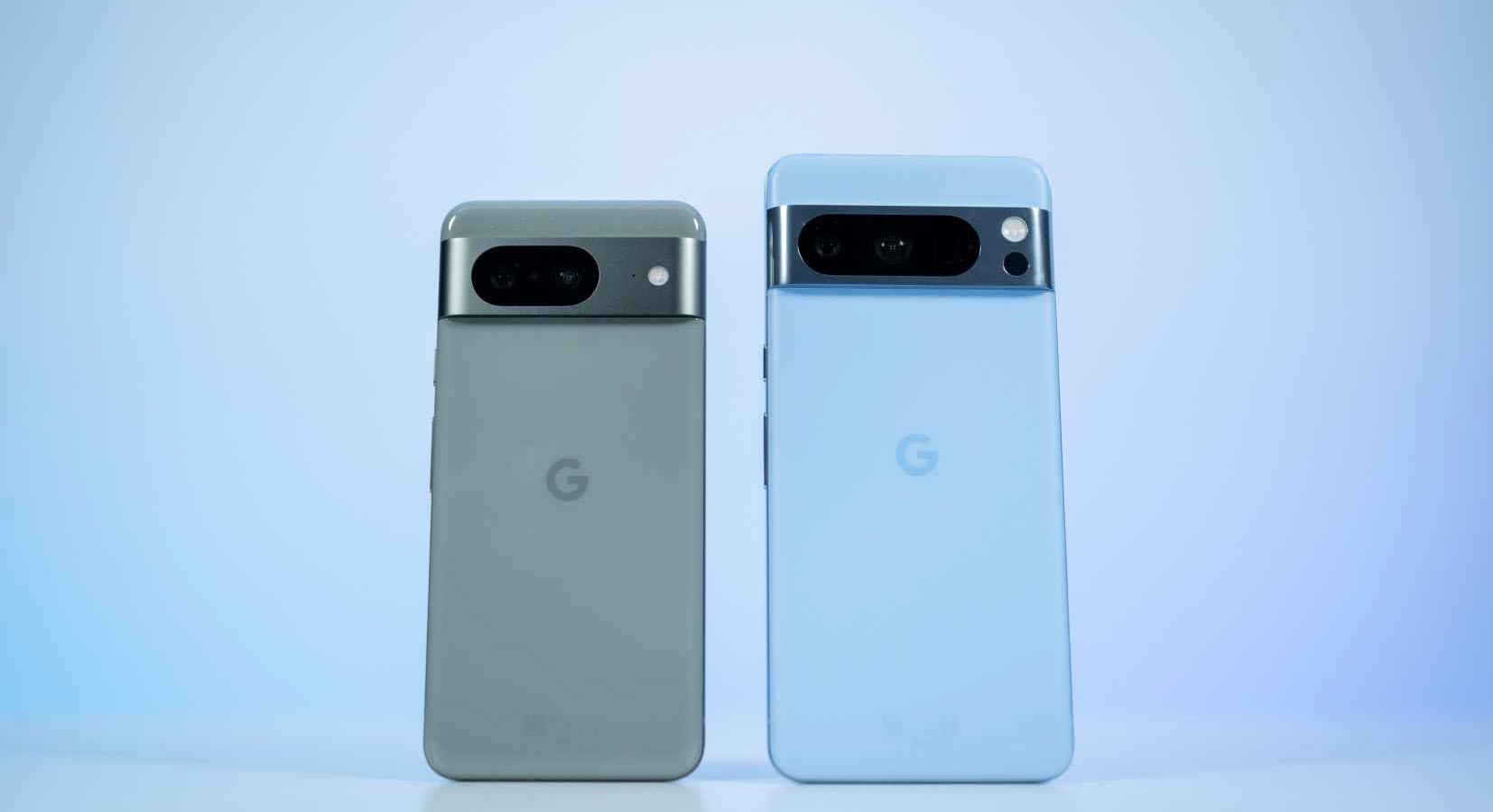
Google’s offerings cover a wide spectrum, including productivity at work, location with Google Maps, payments with Wallet, image processing, the Google Assistant, integration with the connected home, and more, ultimately focusing on providing a comprehensive user experience for daily life. In this regard, the Pixel 8 devices are equipped with the Tensor G3 chip, designed to harness artificial intelligence (AI) to assist with daily tasks, allowing users to accomplish more throughout the day in less time.
The new capabilities of the phone include voice recording synthesis, automatic transcription, spam call recognition, online information summarization, improved connectivity with smart home devices, and enhanced call clarity, reducing background noise. While smartphones are often thought of as primarily for communication, these improvements make the Pixel 8 much more versatile.
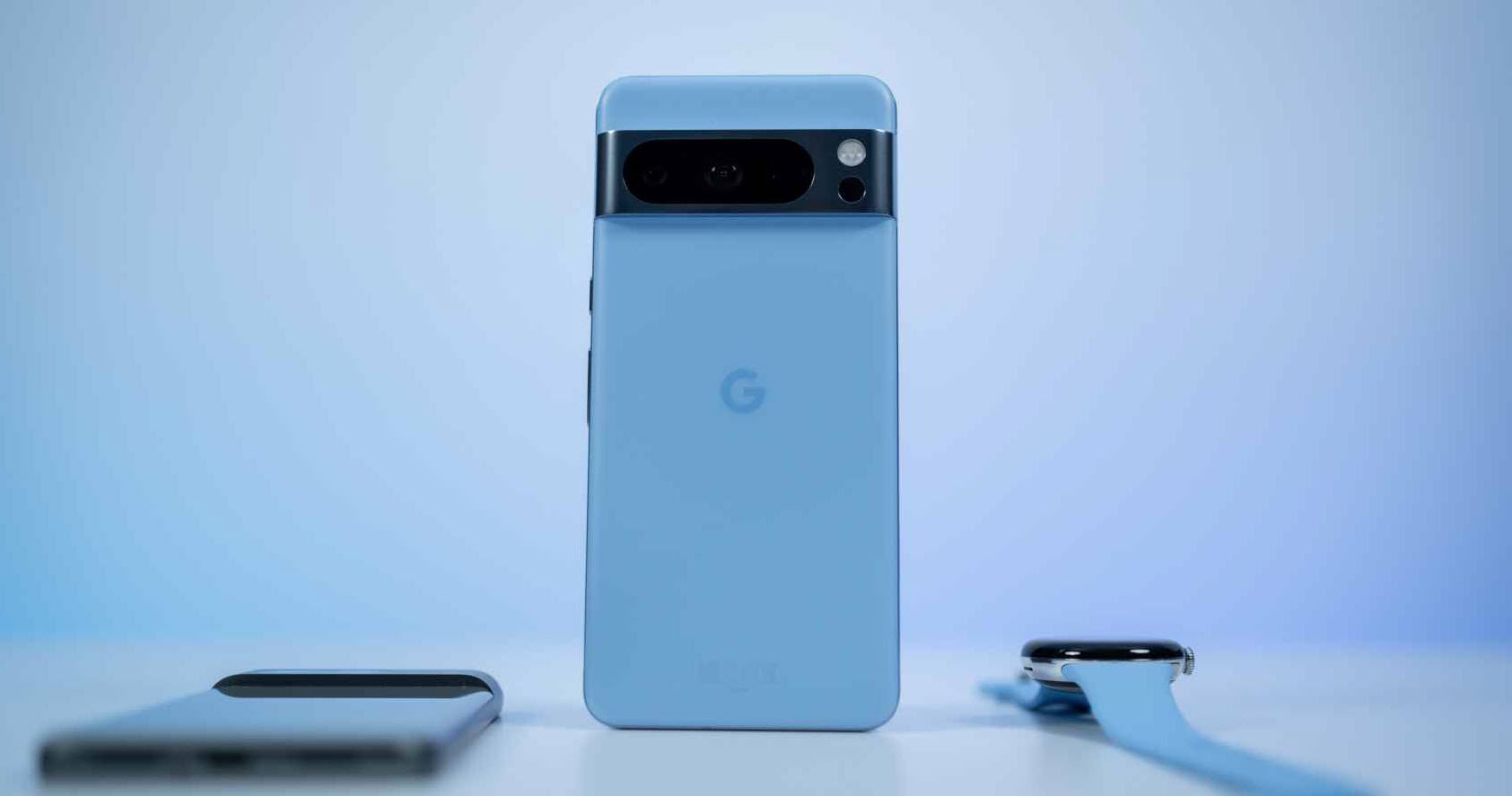
Google’s bold claim is that its new phones are ready to receive seven years of full updates, ensuring they will be able to run Android 21 or any future Android version released in 2030. Along the way, battery replacement may be necessary, but Google will facilitate access to replacement batteries through its after-sales service.
Accompanying the Tensor G3 chip is Google’s own security chip, the Titan M2, which adds multiple layers of additional security to prevent data leaks, enable integrated VPN, and support the new facial recognition system that allows for payments or logging into banking apps. The commitment to seven years also extends to security certificates.
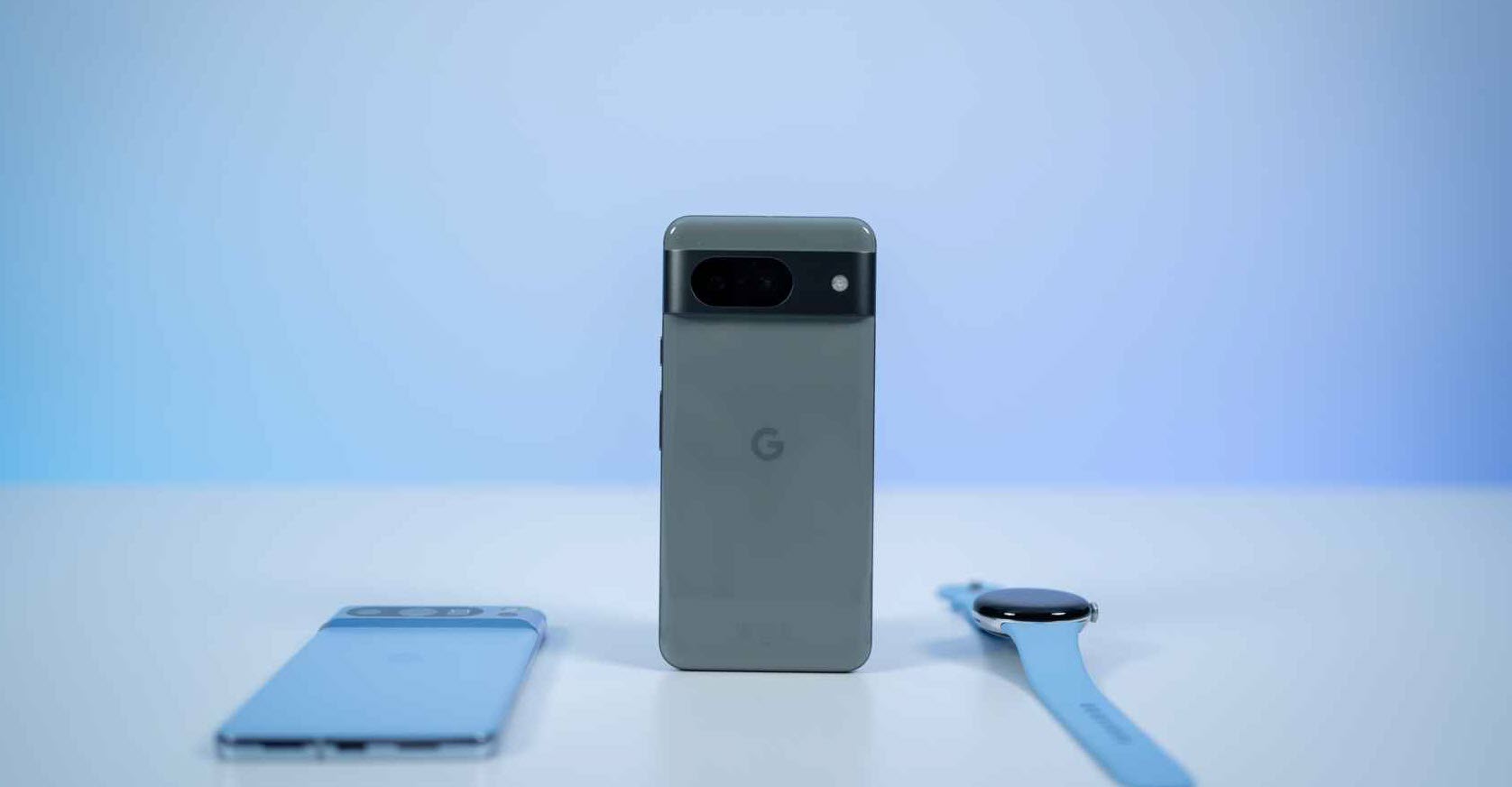
Regarding performance, the key difference between both models is in the RAM. The Pixel 8 Pro offers up to 12 GB of RAM, while the Pixel 8 has 8 GB. Nevertheless, both devices run smoothly and respond accurately to heavy AI-driven tasks.
One of the Pixel 8 Pro’s more curious features, though not necessarily practically applicable, is the inclusion of a thermometer. By pointing it at objects, you can determine their temperature. It’s not yet precise enough for human use, but it’s proven handy for checking things like your child’s bathwater temperature.
If there’s one area where Google’s artificial intelligence system is critical, it’s in the processing and management of images captured by the camera. While not the only focus, it’s the primary reason to consider purchasing this phone. Its photo and video management is almost magical, making it as simple as pressing a button for a perfect shot. This year, Google has gone a step further, allowing advanced users to have greater control with a new camera interface.
One of the key differences between the Pixel 8 and Pixel 8 Pro lies in the camera. Both models share the same 50-megapixel main camera sensor, but the higher-end model features multi-zone focus, a superior 48-megapixel ultra-wide-angle camera (compared to the 12-megapixel camera on the Pixel 8), and an additional third 48-megapixel lens with 5x optical zoom and 30x high-resolution zoom, with AI playing a significant role.
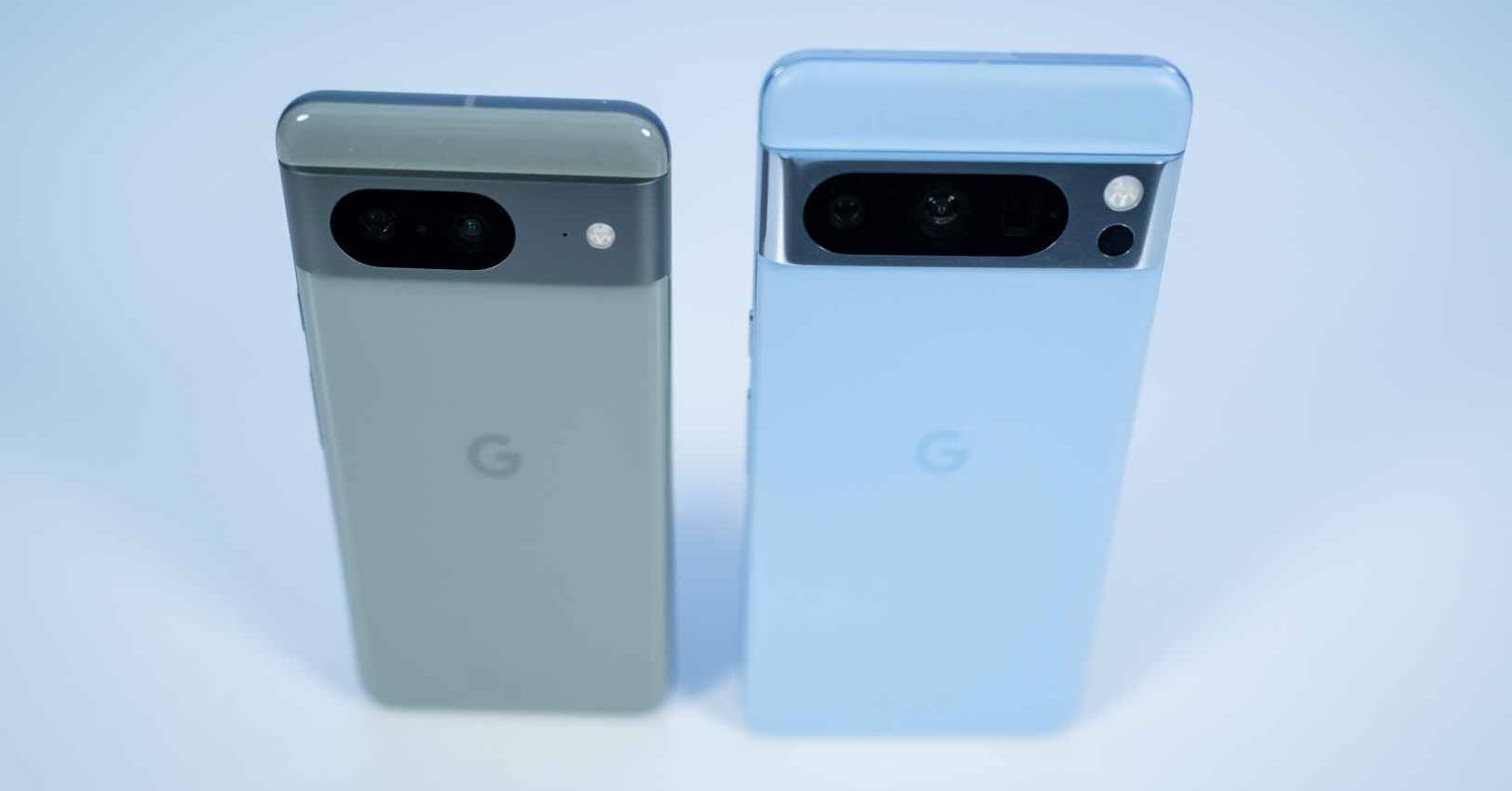
In general, the photos are better than the previous generation, with increased light absorption thanks to the primary lens having an f/1.68 aperture, compared to the f/1.85 aperture of the Pixel 7 Pro. Likewise, the ultra-wide-angle and telephoto lenses on the Pixel 8 Pro offer better performance than the previous generation’s Pro model. It’s not a revolutionary change, but it represents a real advancement in combining hardware and software camera capabilities.
This is where Google’s computational magic comes into play when taking photos or videos. The phone can not only choose the right scene and focus, and suggest what you want to capture, but it offers features that blend science fiction with utilities that were previously reserved for advanced users.
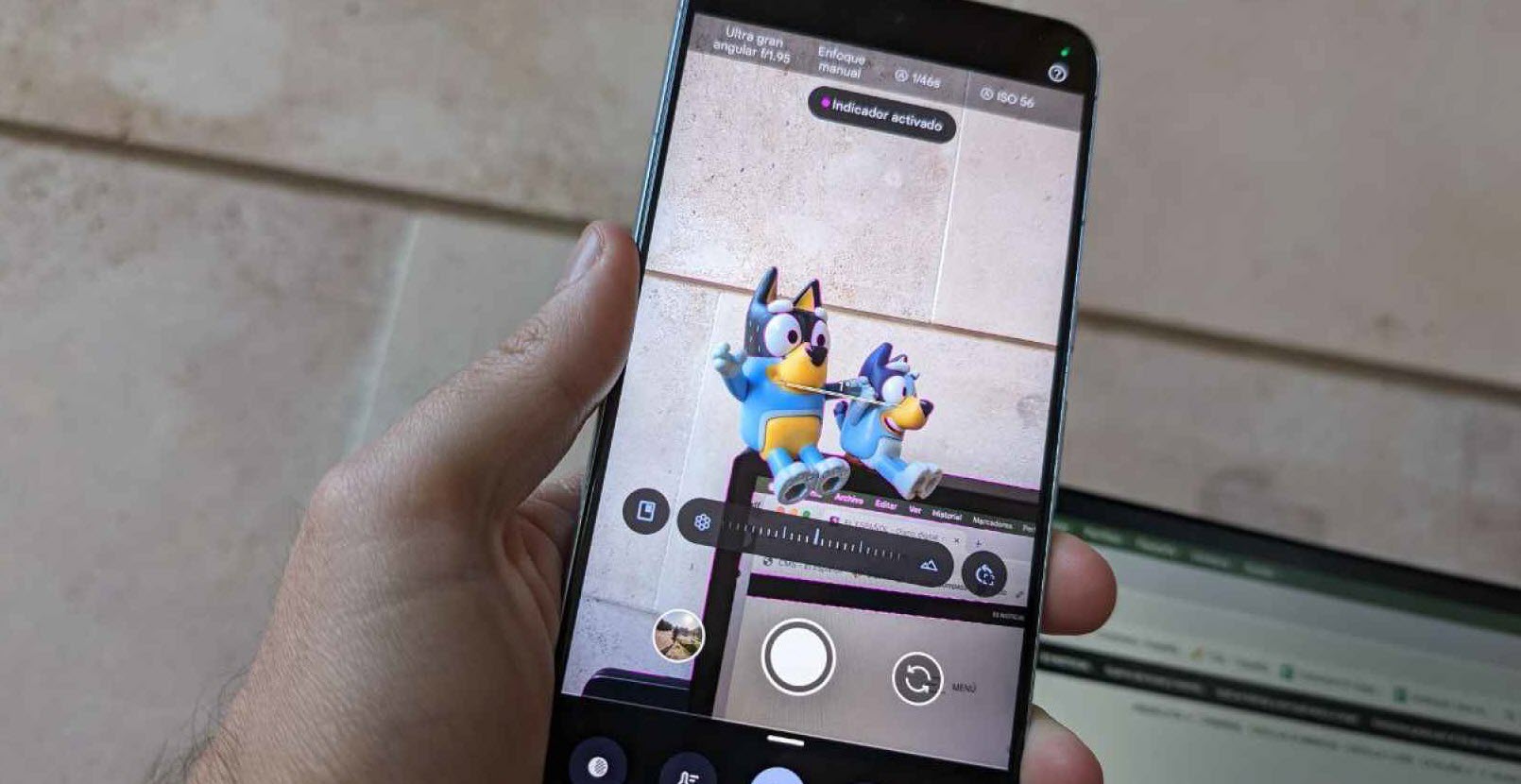
For example, one of the most intriguing features is “Best Shot,” which allows you to combine several group photos to select the best face for each member of the group, even if that specific photo never existed. Similarly, in audio, you can remove annoying intrusions like coughs or applause from a concert video, avoiding interruptions to the song you’re recording.
Beyond these standout features, the camera functions well in what you would expect from a high-end phone camera. It offers well-adjusted colors, accurate HDR, faithful skin tone rendering, precise portrait mode (both for photos and videos), night vision, astrophotography, and features already present in previous generations, like the magic eraser or the motion mode that provides super stability to the phone.
One of the most interesting details in the new Pro model’s camera is the ability to access advanced controls. Now, you can not only choose the shutter speed, ISO, or specific lens, but Google gives you complete control over manual focus. It highlights what is in focus with a subtle pink shadow, much like a professional camera viewfinder.
Google has chosen to continue the design philosophy it introduced with the Pixel 6. The company’s decision to differentiate itself from the rest of the market with a prominent camera module that stretches across the entire back, combined with vibrant colors, continues with the Pixel 8 devices.
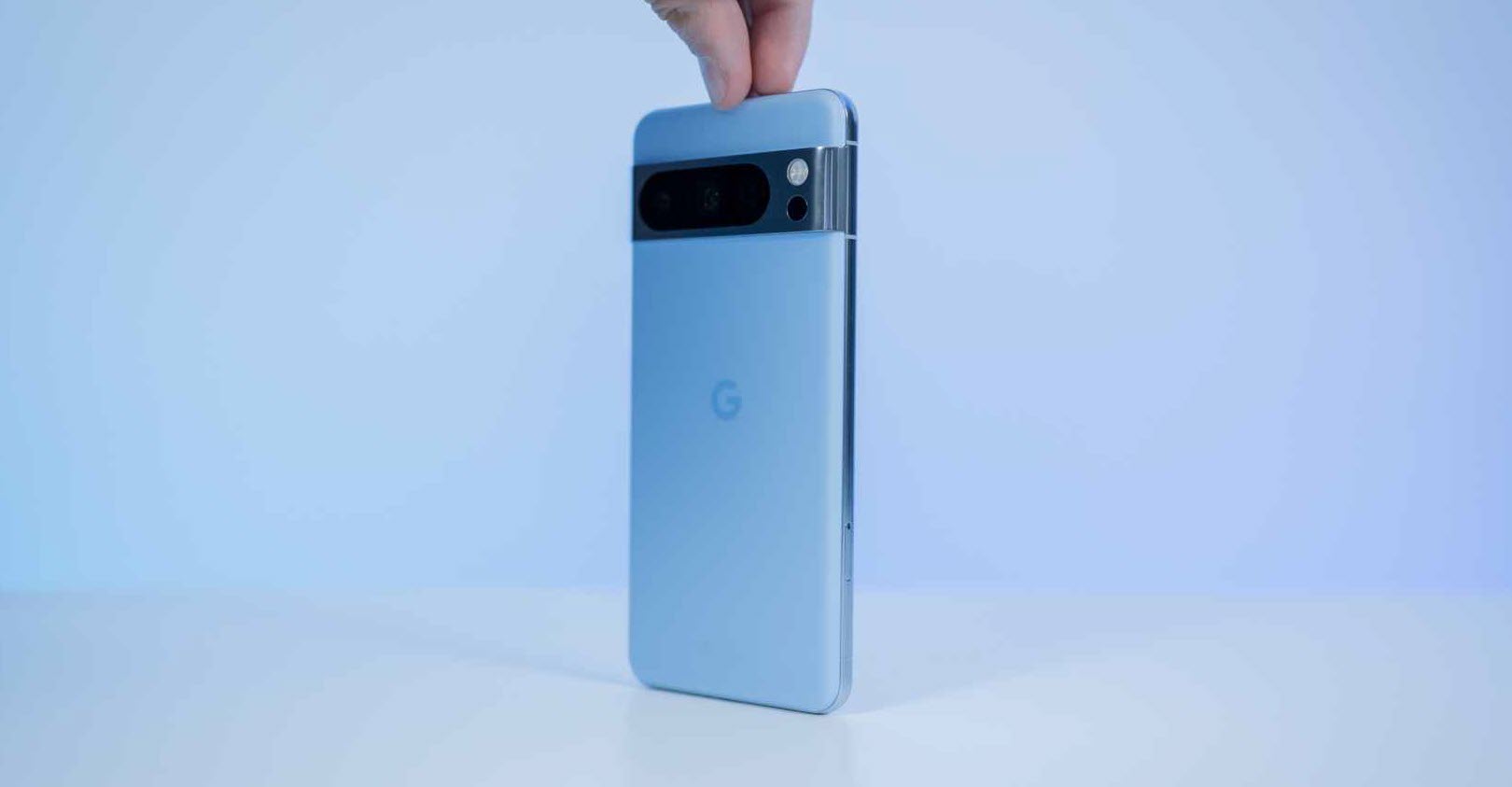
The design is distinctive, making it easy to recognize Google’s phones from a distance. In this iteration, the Pixel 8 Pro loses the curved screen it had in the previous generation, opting for a slightly more rounded silhouette, new finishes, and new colors. The Pixel 8 Pro has a 6.7-inch screen with a polished aluminum frame and a matte finish glass back, while the Pixel 8 features a 6.2-inch screen with a satin-finish metal frame and a polished glass back.
In any case, both devices feel comfortable and ergonomic in the hand, and they are not slippery. Both models have IP68 protection, making them resistant to liquid spills and dust. The Pro model features Gorilla Glass Victus 2, while the Pixel 8 uses Victus glass from the previous generation.
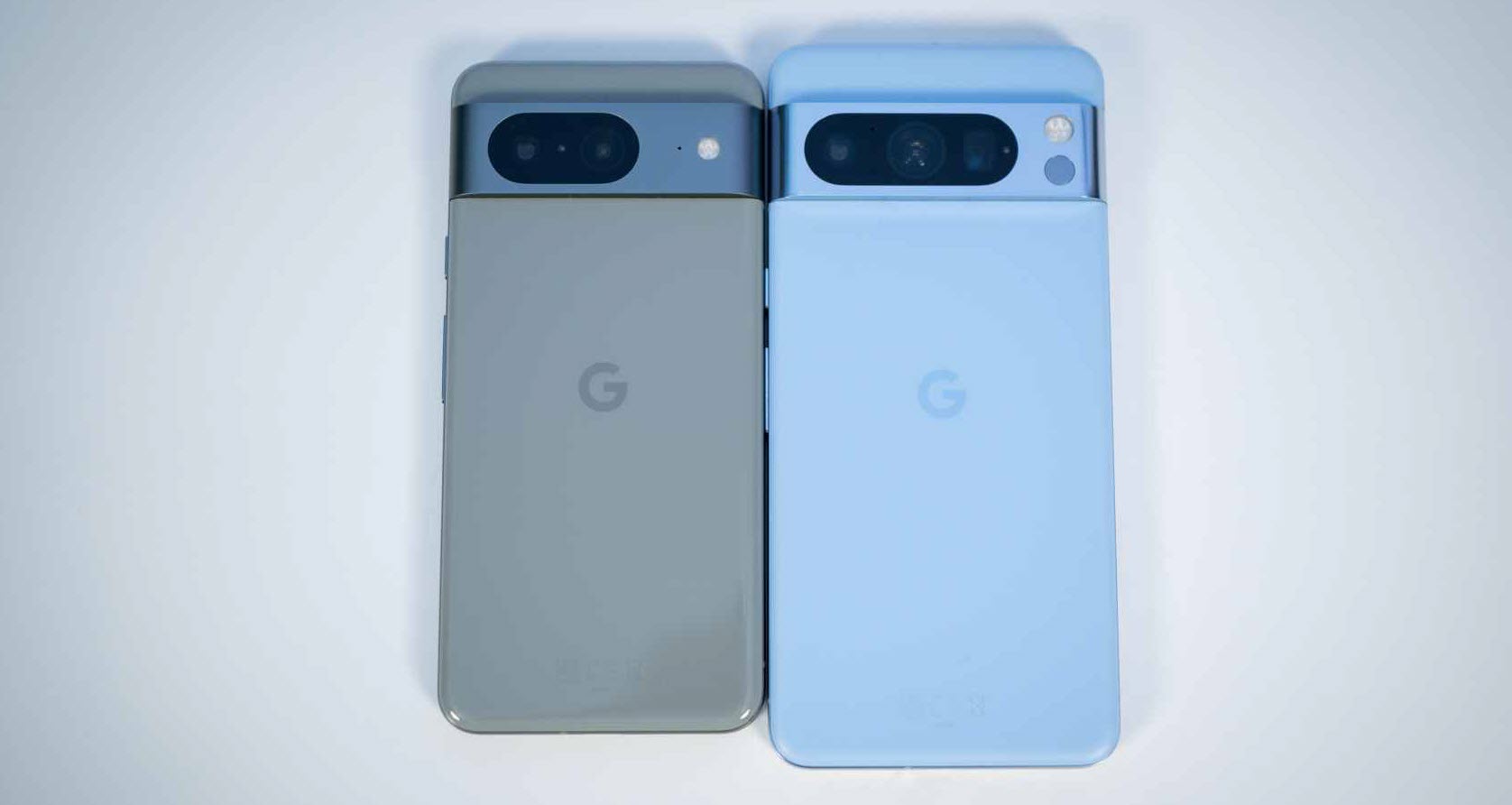
The most significant design change is in the display. Google has increased the brightness in both models compared to the Pixel 7 Pro. The Pixel 8 reaches up to 1,400 nits (HDR) and up to 2,000 nits at maximum brightness in direct sunlight, while the Pixel 8 Pro reaches 1,600 and 2,400 nits, respectively. Both displays are impressive, providing a great experience in daily use.
Google has dubbed this technology “Actua” and “Super Actua Display,” which translates to an OLED panel with 428 pixels per inch (1080×2400) and an OLED LTPO panel with 489 pixels per inch (1344×2992), both with a 20:9 aspect ratio. The difference between the panels also lies in their smoothness; the Pixel 8 Pro features a fluid refresh rate between 1 and 120 Hz, while the Pixel 8 offers a rate between 60 and 120 Hz.
Regarding battery life, both phones promise more than 24 hours of use, and in practice, they deliver on this promise. Even with intensive usage, you can be confident that you’ll get through the day without issues. The smaller Pixel 8 model comes with a 4,575 mAh battery, while the Pro model has a 5,050 mAh battery. Both support fast charging of 27W and 30W, as well as wireless charging of 18W and 23W with the Pixel Stand (which drops to 12W with Qi).
Beyond the Pixel 8 devices, the other star of Google’s launch on Thursday is the Pixel Watch 2. Following the trend of testing initial versions in more mature markets, Google is now releasing its first entirely “made in Google” smartwatch.
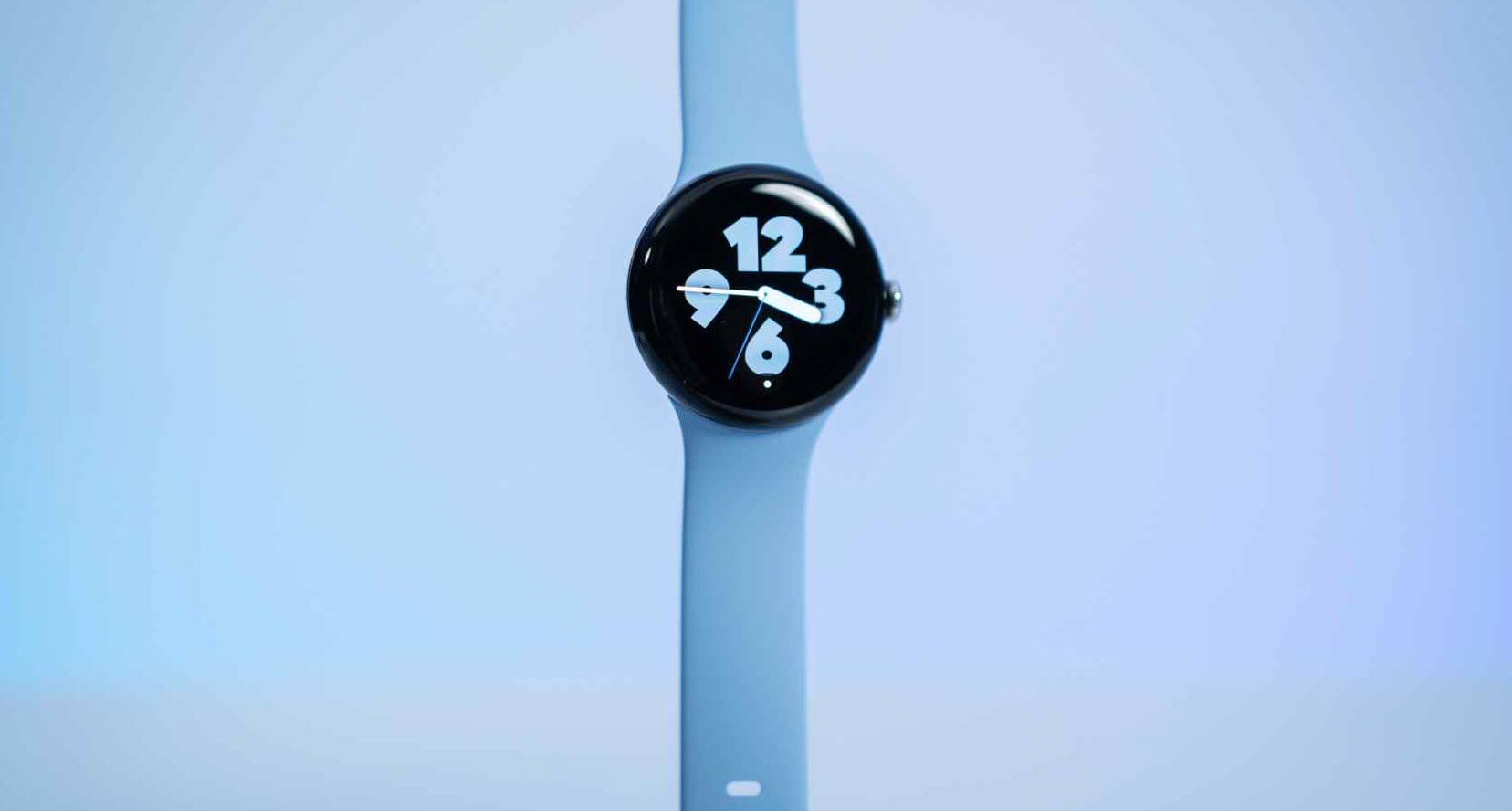
The watch features a sleek, rounded, and compact design with a 41mm watch face that looks great on the wrist. It has an aluminum case with a beautiful polished finish and comes with a comfortable and lightweight sports strap, weighing around 30 grams. It feels premium and elegant, making it the perfect companion for the new phones from Google.
You can interact with the watch by tapping the AMOLED screen (320 PPI and 1,000 nits), using the side button, or rotating the crown. It feels very responsive and agile thanks to the Qualcomm 5100 chip, 2GB of RAM, and Wear OS 4.0.
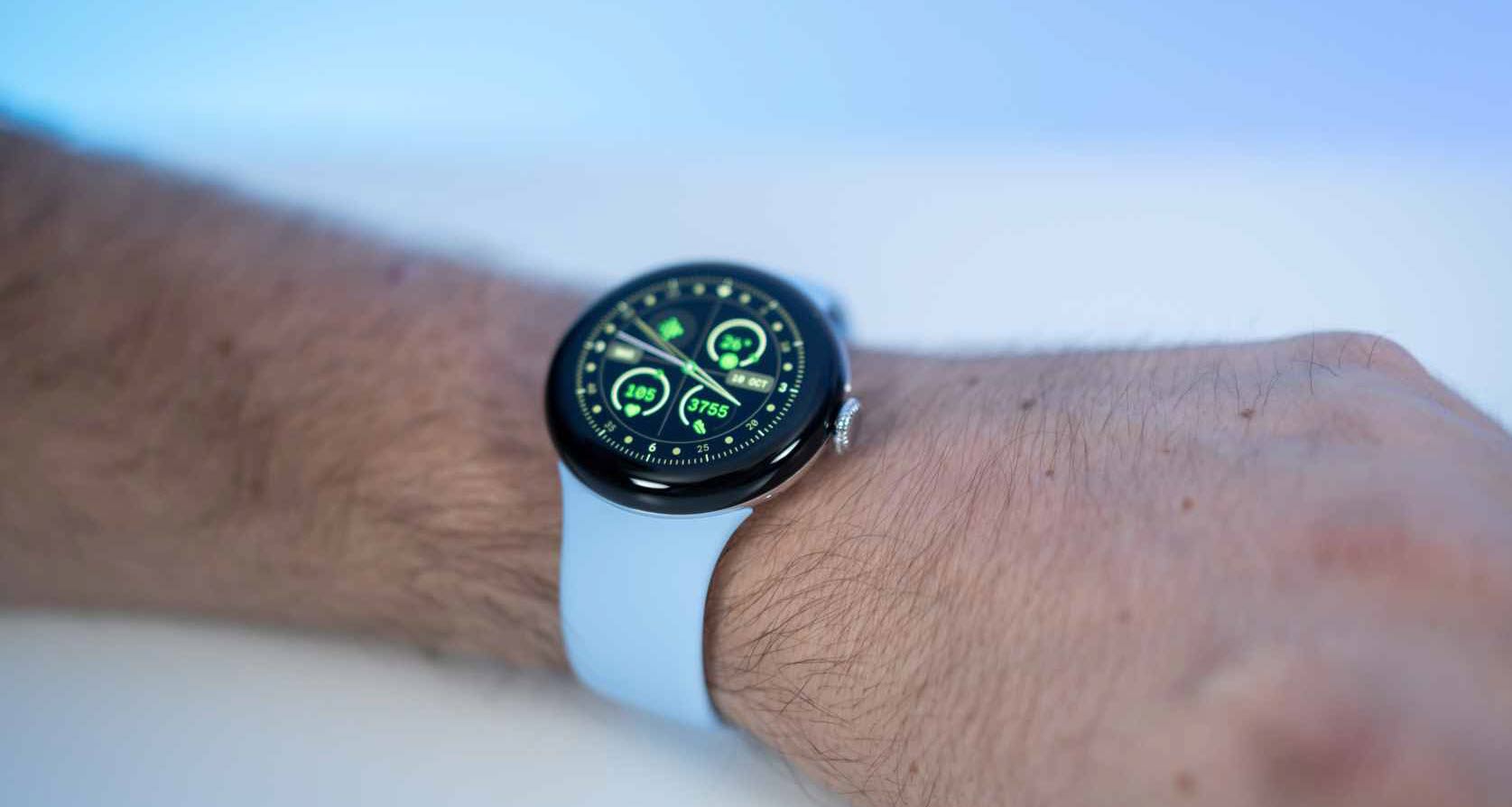
The watch incorporates sensors for monitoring blood oxygen saturation, electrocardiogram and heart rate applications, as well as temperature measurement and a skin electrical conductivity sensor (cEDA) for body response monitoring. This extensive sensor array is designed to provide in-depth insights into the user’s physical condition and alert them when something is amiss.
Google combines its AI technology with Fitbit’s expertise in the field of physical activity to enable users to understand their bodies better. This smartwatch provides real-time insights, helping users decide when and how to exercise, when to rest, and how to manage stress.
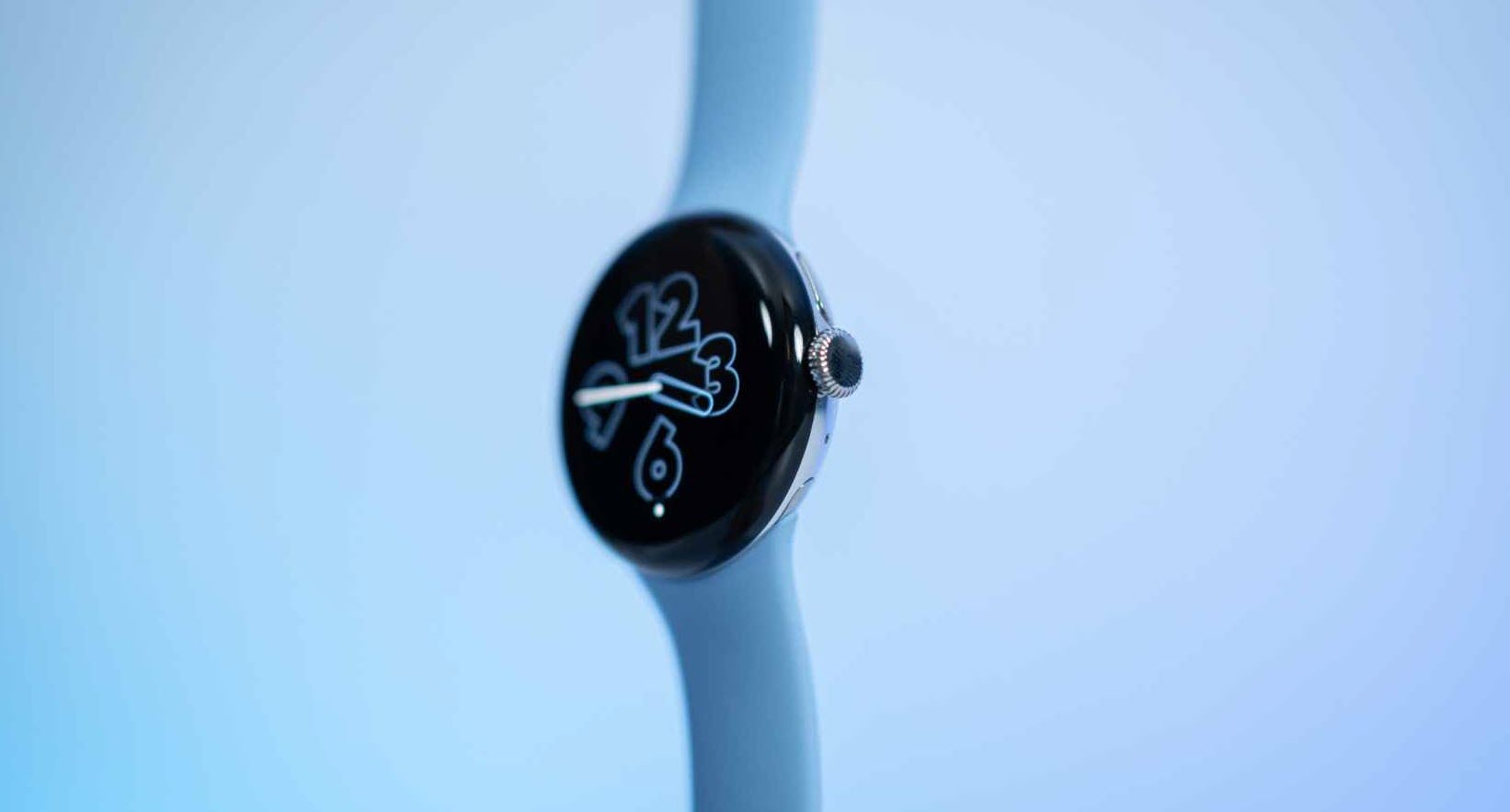
It also includes other features like an altimeter, GPS, compass, and NFC, enabling the watch to function independently from the phone for tasks like making payments with Wallet or checking directions on Google Maps. Additionally, you can use it for everyday tasks such as checking the score of your favorite sports team or replying to WhatsApp messages.
In terms of battery life, Google promises 24 hours with the always-on display, although during the initial days of use, it fell short on some occasions. Further testing with regular and less intensive use is required to see how it performs under normal conditions. Nevertheless, it comes with a fast charging cable that can reach 80% charge in 43 minutes (50% in 30 minutes and 100% in one hour and 15 minutes).
Another significant aspect of Google’s new devices is their pricing. The Pixel 8 starts at €799 for the 128GB version and goes up to €859 for the 256GB model. The Pixel 8 Pro, on the other hand, starts at €1,099 for the 128GB model and goes up to €1,159 and €1,299 for the 256GB and 512GB versions. The Pixel Watch 2 is available in a single version for €399, although it can be reduced to €229 if purchased with one of the latest phones.
These prices indicate that these are not devices for the mass market, as the Pixel 7a might be. These are high-end devices with strong capabilities designed to last and offer peak performance for years to come. If you’re seeking an ambitious camera, the Pixel 8 Pro, with its larger and brighter display, is recommended. However, if you want a high-performance phone that takes excellent photos, the Pixel 8 is the one for you. If you’re looking for a great combination of price and photo quality, the Pixel 7a is an excellent mid-range choice with a fantastic camera.

As for the watch, its price is on the higher side compared to other compatible options in the Android market. While its performance and design are fantastic, some users may be put off by the need to charge it daily. Personally, I’m accustomed to doing so with the Apple Watch, but for those who are used to charging their smartwatches once a week, it could be a change in their routine. In any case, it’s the best companion for the Pixel 8, just as the Apple Watch is for the iPhone and the Galaxy Watch is for Samsung phones. It’s the ideal partner.